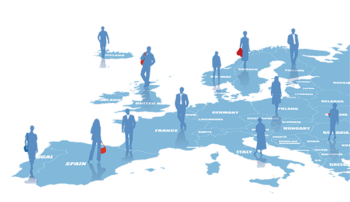Hulp nodig met uw buitenlandse BTW verplichtingen?
Heeft u ondersteuning nodig op het gebied van uw buitenlandse BTW verplichtingen? Als uw bedrijf op wereldschaal opereert, is het zeer waarschijnlijk dat u verplicht bent om u voor BTW te registreren in één of meerdere landen. Bij Global VAT Compliance (GVC) kunnen wij u assisteren bij het bepalen van uw internationale BTW compliance en bieden wij een uitgebreide ondersteuning bij alle aspecten van uw BTW aangifte verplichtingen, inclusief BTW registratie, rapportage, fiscale vertegenwoordiging en BTW betalingen.
De gespecialiseerde end-to-end diensten van GVC zorgen ervoor dat u volledig BTW compliant bent en zich kunt richten op uw groeiend bedrijf.
Onze diensten
Bekijk meer
Bekijk meer
GVC onderzoekt of een BTW registratie noodzakelijk is voor uw bedrijf of dat er alternatieve oplossingen mogelijk zijn.
Als uw bedrijf op wereldwijde schaal opereert, is het zeer waarschijnlijk dat u verplicht bent om u voor de BTW te registreren in een of meerdere landen. Elk bedrijf is uniek en er is verschillende informatie vereist voor het vaststellen van de BTW verplichtingen die voortvloeien uit de diverse transacties. Bij GVC kunnen wij u helpen bij het bepalen van uw internationale BTW verplichtingen en uitgebreide ondersteuning bieden voor alle aspecten van uw BTW Compliance.
Als een BTW registratie in een bepaald land de beste optie voor u is, bereiden wij alle vereiste documenten voor en dienen het registratie verzoek namens u in. Dit om zo snel mogelijk alle benodigde btw-nummers te verkrijgen van de desbetreffende belastingautoriteiten. Mocht u lokale BTW vertegenwoordiging nodig hebben om uw BTW registratie te verkrijgen, dan kunnen wij optreden als uw fiscaal vertegenwoordiger in alle benodigde landen.
Zodra uw bedrijf geregistreerd is voor de BTW, moet u ervoor zorgen dat het voldoet aan de lokale BTW aangifteverplichtingen. Onze diepgaande BTW kennis, samen met onze geavanceerde API-oplossing Mytaxflow voor BTW rapportages, zorgen ervoor dat uw BTW rapporten altijd nauwkeurig en tijdig zijn, zodat u volledig BTW compliant bent. Ieder land heeft zijn eigen regels met betrekking tot BTW rapportages en Global VAT Compliance is altijd up-to-date met alle noodzakelijke regels en voorschriften.
Naast het assisteren bij het indienen van uw BTW aangifte, biedt GVC uitgebreide ondersteuning bij het indienen van verschillende rapportages die vereist zijn. Deze omvatten Europese verkooplijsten, EC Sales List (ESL), voor grensoverschrijdende transacties binnen de EU, evenals Intrastat-aangiften. Bovendien kan GVC, indien nodig, verdere rapporten verstrekken zoals:
- Jaarlijkse btw-aangiften
- Europese inkooplijsten
- Lokale verkooplijsten
- SAF-T
- BTW-teruggaafverzoeken
Bepaalde landen vereisen dat u een fiscaal vertegenwoordiger aanstelt wanneer uw bedrijf buiten de Europese Unie is gevestigd, om zo volledig te voldoen aan uw BTW verplichtingen.
Als alternatief, zelfs als het niet verplicht is, kan fiscale vertegenwoordiging BTW- en kasstroomvoordelen opleveren en GVC zal ervoor zorgen dat u hiervan profiteert.
Fiscale vertegenwoordiging kan u helpen de volgende voordelen te maximaliseren:
- verlegging van invoer-btw
- BTW-entrepot regeling
- Verleggingsregeling Nultariefhandel in accijnsgoederen
Houd er rekening mee dat veel landen strikte eisen stellen bij het verlenen van een vergunning voor fiscale vertegenwoordiging. GVC is volledig op de hoogte van deze eisen en heeft regelmatig contact met belastingautoriteiten in verschillende landen.
Geïnteresseerd in een gratis BTW consult van 15 minuten?
Het doen van de BTW afdracht is de laatste stap in het compliance proces. Internationale opererende bedrijven moeten vaak BTW betalen in verschillende landen, in meerdere valuta’s en er kunnen verschillende bankbeperkingen van toepassing zijn bij internationale geldtransacties.
GVC helpt haar klanten om BTW betalingen tijdig uit te voeren zonder zich zorgen te hoeven maken over het wisselen van valuta of land specifieke regels met betrekking tot BTW afdrachten. Dit is een aanvulling op de compliance diensten van GVC. Klik hieronder om meer te lezen over onze diensten met betrekking tot BTW betalingen.






